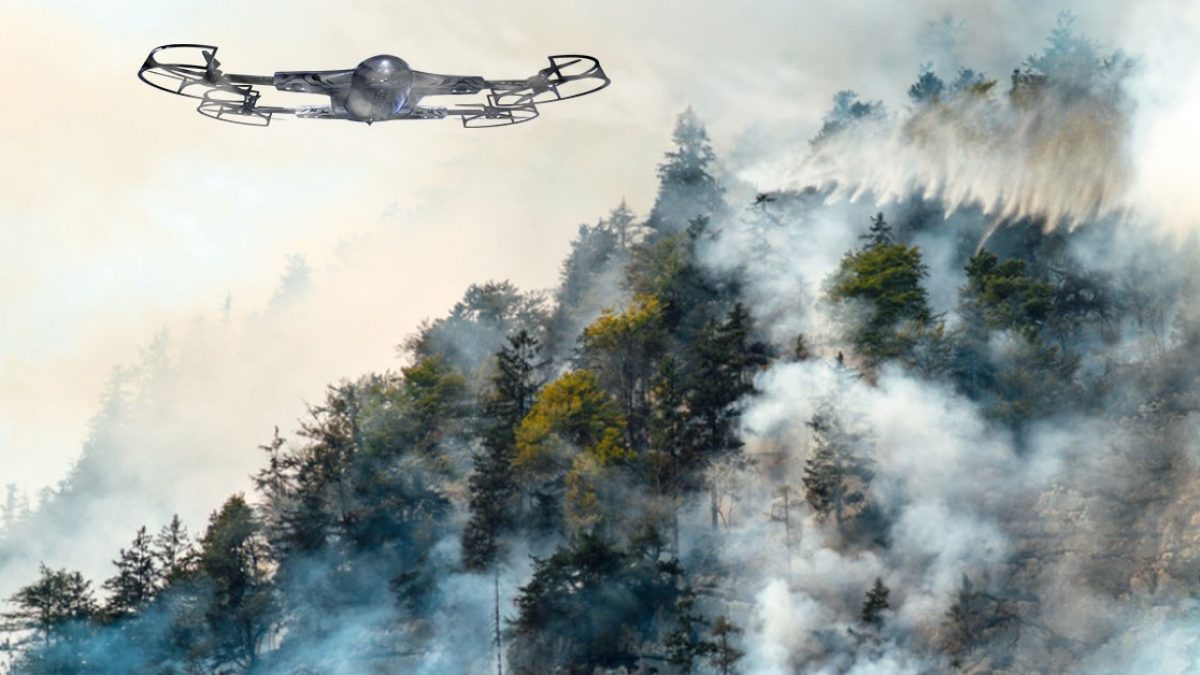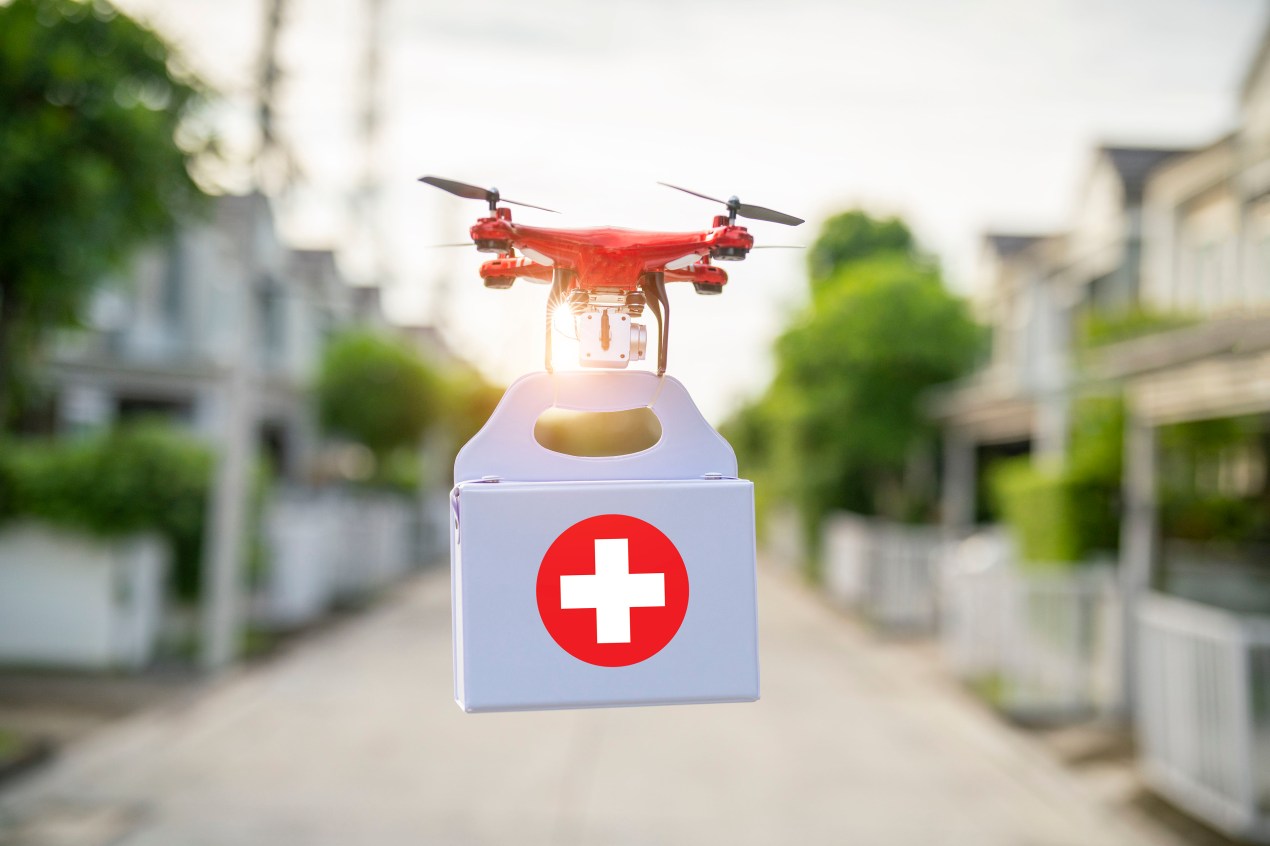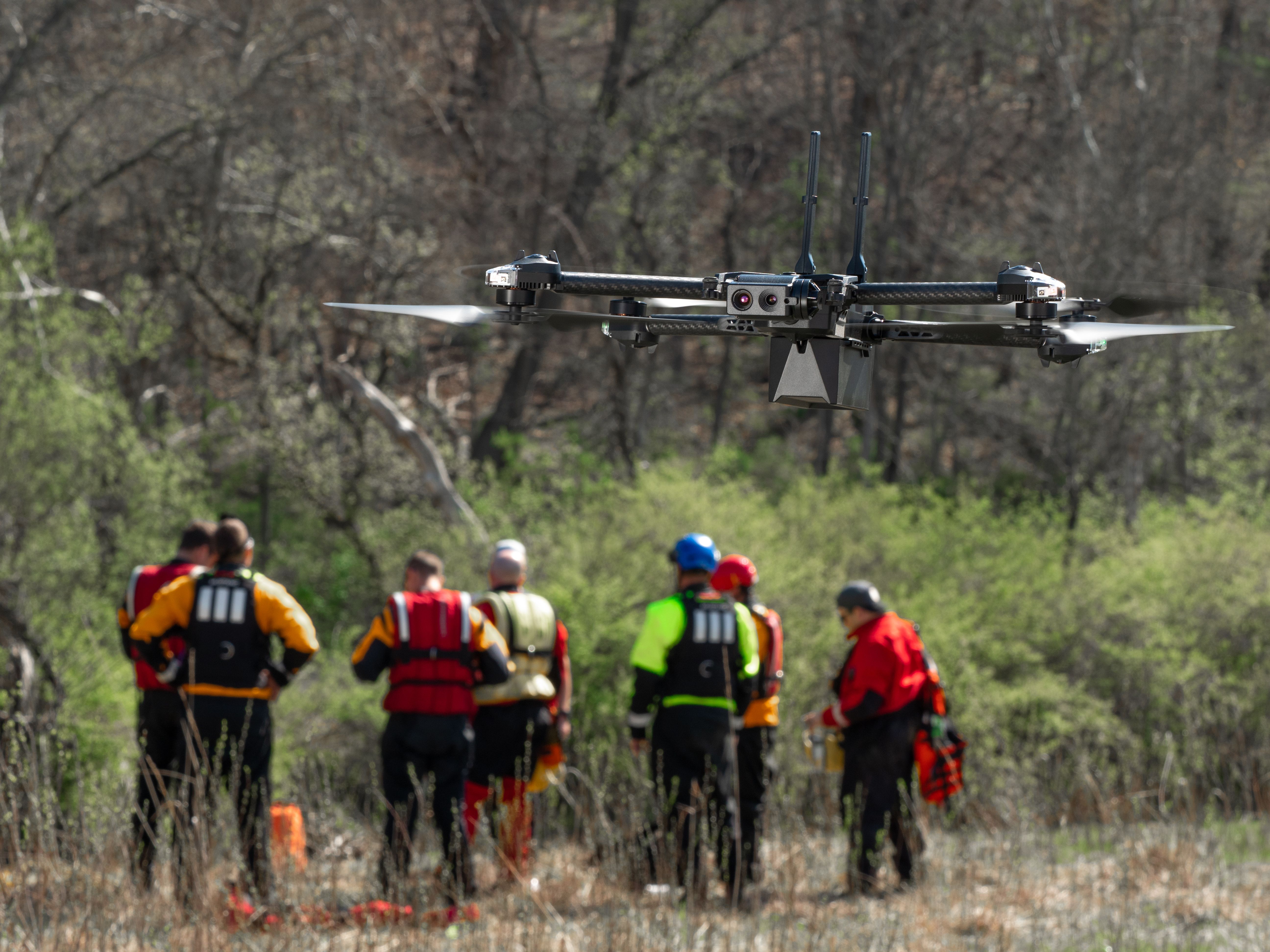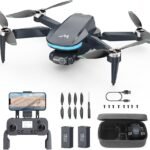Overview of Drone Technology
With technology advancing at breakneck speeds, drone technology has carved out an impressive niche across various sectors. These unmanned aerial vehicles (UAVs) have evolved from simple remote-controlled gadgets to sophisticated machines equipped with high-definition cameras, sensors, and artificial intelligence capabilities. Imagine standing in your backyard and seeing a drone zipping through the sky, capturing stunning images of a sunset or surveying your property for any potential damage. It feels futuristic, yet this is part of our reality today! Drones come in many shapes and sizes, and their utilization spans a wide array of applications, such as:
- Photography and Videography: Elevating the visual storytelling in film and television.
- Agriculture: Monitoring crops and livestock health efficiently.
- Real Estate: Offering aerial views that provide potential buyers with a unique perspective.
- Logistics: Delivering goods over short distances, which seems to be just around the corner.
When it comes to emergency situations, drone technology has a potential impact that can’t be overstated. They can be deployed in various scenarios, from natural disasters to medical emergencies, acting as eyes in the sky to assess situations quicker than traditional methods would allow.
Importance of Emergency Response
Understanding the significance of emergency response is critical. Picture this: You find yourself in the middle of a natural disaster — say, a wildfire or an earthquake. Life can hang in the balance; every second counts when it comes to saving lives and providing rapid assistance to those in distress. In this context, the role of drones becomes even more apparent, and their capacity to act efficiently could mean the difference between life and death. Here are some key reasons why emergency response is crucial and how drones fit into the picture:
- Timeliness: In times of crisis, quick action is paramount. Drones can reach locations that might be inaccessible to first responders due to debris or environmental hazards. Imagine a drone flying over a flood zone, mapping out the safest pathways for rescue teams.
- Heightened Situational Awareness: Drones can gather real-time data, offering a bird’s-eye view that helps responders make informed decisions. This capability was evident during the recent hurricanes, where drone footage provided invaluable insights into damage assessments.
- Cost-Effectiveness: Using drones can reduce the costs associated with emergency response. They require fewer resources compared to manned aircraft or ground vehicles, allowing agencies to allocate their budgets more effectively while still meeting critical needs.
- Expanded Reach: Drones can survey vast areas in a fraction of the time it would take human teams. For example, in search and rescue missions, a drone can cover extensive mountainous terrain much quicker, allowing teams to locate missing individuals sooner.
- Disaster Response Innovations: Drones are also being instrumental in situational demand assessments, allowing governments and NGOs to survey communities more accurately after a disaster.
In my experience, I recall a local emergency responder sharing how a drone saved a stranded hiker during a storm. The hiker had twisted an ankle and was unable to move. Traditionally, retrieving them would have taken hours. Thankfully, the drone flew over the terrain, pinpointed the hiker’s location, and directed a quick-response team right to them. This story is just one of many demonstrating how drones can truly enhance emergency response efforts. Furthermore, the integration of drone technology in emergency response is no longer a futuristic concept; it is becoming a reality. Authorities are increasingly recognizing the need to embrace this technology and implement standard protocols for its use. In summary, as we traverse further into an era characterized by rapid technological changes, the role of drones in emergency response will only expand. These devices are not just tools; they are lifelines in critical situations. With a combination of timeliness, efficiency, and adaptability, drones have become indispensable assets, shaping how we approach emergencies, and ensuring we can respond to disasters swiftly and effectively. Next, we’ll dive into the evolution of drones in emergency response, looking at their historical significance and advancements that have brought us to where we are today. Stay tuned!

History of Drones in Search and Rescue
Drones have paved a remarkable path in emergency response, particularly in search and rescue operations. To fully appreciate their impact today, it’s worthwhile to glance back at the history of drones — how they started as mere military tools, evolving into essential devices for rescuing lives. In the early days, drones primarily served military purposes. The earliest UAVs developed during World War I were used for training purposes or to distract enemy air defenses. However, it wasn’t until the 1990s that we saw the first applications in civilian contexts. As technology advanced, recreational drone enthusiasts began to experiment with remote-controlled flying. By the mid-2000s, the first significant deployments of drones in search and rescue missions took place. For instance, during natural disasters like Hurricane Katrina in 2005, drones equipped with basic cameras began to emerge. They provided rescuers and officials with crucial aerial reconnaissance, tentatively setting the stage for more advanced uses in the future. Let’s consider a noteworthy case: during the aftermath of the 2010 Haiti earthquake, drones were quickly adopted for assessing damage and searching for survivors. The ability to send drones into dangerous or inaccessible areas dramatically expedited rescue efforts. Fast forward to today, and you’d be amazed at the comprehensive evolution:
- Improved Sensor Technology: Drones now carry advanced thermal imaging cameras, capable of detecting heat signatures. This allows rescuers to locate individuals trapped under rubble or in dense forest after a disaster.
- Automated Flight: The introduction of GPS and automation has enabled drones to perform pre-programmed search patterns, covering large areas unassisted. Rescuers can deploy a drone and focus on planning their response while it actively surveys the terrain.
Advancements in Drone Technology
The evolution of drone technology has been nothing short of revolutionary. Every year, we witness innovations that enhance their capabilities, particularly in emergency response situations. Imagine standing at the edge of a disaster zone with a drone buzzing above, providing real-time footage back to a command center. This is not just a dream anymore, but a common reality in today’s modern emergency response operations. Here are some notable advancements:
- Real-Time Data Sharing: Modern drones come equipped with 4G and sometimes even 5G technology, allowing them to transmit live video feeds and data back to command centers without delay. This capability aids decision-makers in allocating resources effectively, as they can see what’s happening in real-time.
- Longer Flight Times: Battery technology has improved dramatically, with some drones capable of flying for over 30 minutes on a single charge. This extended airtime allows for more extensive surveillance without the need for frequent landings and recharges.
- Enhanced Durability: Today’s drones can withstand harsh weather conditions. Whether facing high winds, rain, or extreme temperatures, these devices have been built for resilience, making them reliable assets during perilous rescue missions.
- Payload Capacity: Some drones can carry rescue supplies, such as medical kits or food, directly to individuals in distress. For example, a drone may deliver a first-aid kit to someone stranded in a remote location. This new capability significantly bolsters support efforts in emergencies.
- Artificial Intelligence (AI): The integration of AI technology is transforming how drones operate. They can automatically identify and track objects (like people or vehicles) in their field of view. This feature allows for quicker responses, making AI-equipped drones indispensable tools for search and rescue.
A personal anecdote worth sharing involves a local search and rescue team I witnessed in action during a weekend hiking event. A hiker had gone missing, and with help from a modern drone equipped with thermal imaging, they located the missing person in less than an hour, while ground teams would have taken much longer to cover the same area. The perfect combination of skilled individuals and cutting-edge technology! As drones continue to evolve, their integration into emergency response will likely expand. These advancements are not merely incremental; they are game-changing, creating a landscape where responders can act with unprecedented speed and accuracy. To conclude this section, the evolution of drones in emergency response has revolutionized how search and rescue operations are conducted. From humble beginnings to a technological powerhouse, drones play a pivotal role in ensuring that no one gets left behind during disasters. Next, we’ll explore the benefits of drones in emergency situations—discovering how these tools truly make lifesaving differences when time is of the essence!

Quick Deployment and Mobility
Following the discussion on how drones have transformed search and rescue operations, let’s delve deeper into some of the significant benefits of drones in emergency situations. These unparalleled advantages make them indispensable tools for responders worldwide. One of the foremost benefits is their quick deployment and mobility. When disaster strikes, time is of the essence. Every second matters, and having a tool that can spring into action swiftly can save lives. Consider a recent scenario involving a natural disaster, like a flood. Roads may be blocked, and traditional vehicles can struggle to navigate the area. Drones aren’t hindered by these obstacles. Here’s how they stand out:
- Fast Launch: Most drones can be set up and operational within minutes. In contrast, other modes of transport may require extensive preparations before they can even move. For instance, a drone can be ready to soar just moments after the command center receives a report of a missing person.
- Accessibility: They can reach remote or hard-to-access areas that may be unsafe or impractical for human rescuers. Picture a dense forest or a rugged mountain range where traditional vehicles can’t go. A drone can swiftly fly over and gather critical visuals, scouting for missing hikers or assessing any dangers.
- Real-Time Reaction: Once airborne, drones can adapt their flight path within seconds based on the unfolding situation. If new information arises or a different area requires urgent attention, it can change direction quickly and effectively.
- Reduced Search Times: In a search and rescue context, imagine scouring vast terrains for a lost individual. Traditional teams can take days, whereas drones can cover that same area comprehensively within a matter of hours. This swift action not only saves time but also potentially saves lives.
A personal experience highlights this impressive speed. During a camping trip several years ago, a fellow camper’s child went missing. Panic ensued as family and friends began a foot search in dense underbrush. Within minutes of notifying emergency services, a drone was dispatched. It was able to hover overhead and quickly identify the young camper, who was resting safely nearby. This incident reinforced how mobility and speed can be crucial in emergencies.
Enhanced Data Collection Capabilities
As we shift focus, let’s talk about another game-changing benefit: enhanced data collection capabilities that drones offer in emergency situations. They gather information that can significantly improve response times and decision-making processes. These drones are equipped with advanced technologies that allow them to collect various types of data:
- High-Resolution Imaging: Modern drones come standard with high-definition cameras that capture detailed images and videos. This gives emergency responders a clear view of what they are dealing with, facilitating better planning and execution of their operations.
- Thermal Imaging: As mentioned earlier, many drones now feature thermal imaging sensors that detect heat signatures. This is particularly useful in locating individuals in darkness or in obscured environments like smoke or under rubble. It adds a powerful tool to the rescuers’ arsenal during critical moments.
- Multispectral Sensors: In addition to standard cameras, some drones include multispectral sensors that can analyze vegetation and other environmental factors. This technology can prove invaluable in disaster situations where understanding the terrain and its conditions is crucial for effective planning.
- Geospatial Data: Drones can also create detailed maps using GPS data. With these maps, responders can visualize the affected areas better, noting terrain changes, water levels, and disaster impacts. By understanding the landscape, they can optimize their search areas and assess any potential hazards.
To illustrate this, let’s think about a wildfire scenario. Firefighters can use drone footage to monitor the spread of the fire, see where it might expand next, and allocate their resources accordingly. They can quickly adjust their strategies, knowing where it’s best to fight the fire without inadvertently putting lives at risk. Additionally, the collected data can be transmitted live to command centers or shared with teams on the ground. This instant access to detailed information can drastically improve the situational awareness of all involved, leading to more coordinated and effective responses. In a situation I once witnessed during a severe thunderstorm, emergency services utilized drones to gather real-time data post-flooding, helping authorities assess infrastructure damage and prioritize immediate needs. The data collected proved instrumental in directing resources efficiently, showcasing how critical this enhanced capability is in crisis management. In conclusion, the benefits of drones in emergency situations are immense. Between their quick deployment and remarkable mobility, as well as advanced data collection capabilities, these flying assets empower teams to make quicker, more informed decisions, ultimately leading to better outcomes during crises. As we continue to explore this fascinating topic, the next section will address some challenges faced in implementing drones for emergency response. Understanding potential obstacles is just as important for fully optimizing their capabilities!

Regulatory Hurdles
As we’ve seen regarding the numerous benefits of drones in emergency response, these flying machines shine in situations that demand rapid action and innovative solutions. However, it’s essential to recognize that the path to incorporating drones effectively is not without its challenges. One of the most significant roadblocks to wider adoption is the regulatory hurdles that come along with using this technology. In many countries, drone operation is governed by strict regulations aimed at ensuring safety for both airborne devices and those on the ground. While these rules are well intended, they can complicate timely drone deployment during emergencies. Here are some key regulatory hurdles that need to be navigated:
- Flight Restrictions: Many urban areas have designated no-fly zones, especially around airports and sensitive locations. In an emergency, these constraints can pose significant limitations on where drones can be deployed. Emergency responders might find themselves unable to assist in critical areas simply because of regulatory restrictions.
- Licensing Requirements: In many regions, operating a drone for commercial or emergency purposes often requires special licenses and certifications. This creates a bottleneck effect during crises when minutes matter. What if a disaster strikes and the operators on site lack the necessary paperwork to legally launch the drone?
- Insurance and Liability: Regulations also revolve around insurance requirements and liability issues. While granting emergency responders permission to employ drones is vital, it raises questions about accountability should something go wrong. Who is responsible if a drone causes injury or damage during a rescue operation? This complexity can deter agencies from fully integrating drones into their emergency response plans.
- Coordination with Authorities: Regulatory compliance often requires communication with multiple governing bodies. When a disaster strikes, establishing timely, efficient communication between local, state, and federal authorities can be challenging. Frustrations may arise as responders attempt to navigate red tape while lives are on the line.
To illustrate, consider a recent hurricane in which emergency responders were eager to deploy drones to assess coastal damage. Unfortunately, lingering flight restrictions delayed their response, heightening the urgency and pressure to act efficiently. It wasn’t until talks with local authorities and application for special permission that drones finally took to the skies. This experience underscores how red tape can hinder timely responsiveness.
Privacy and Ethical Concerns
Shifting gears, let’s examine another critical challenge that arises when using drones for emergency response: privacy and ethical concerns. As drones become more prevalent in our skies, the implications surrounding privacy rights and the ethical use of technology cannot be overlooked. The introduction of aerial technology raises many thought-provoking questions. Here are some key points to consider:
- Surveillance Possibilities: Drones equipped with high-definition cameras can potentially capture more than just images needed for emergency assessments. There’s a fine line between gathering necessary data for rescues versus infringing on individuals’ privacy. If a drone inadvertently captures footage of victims’ homes, it can lead to ethical dilemmas around consent and misuse of data.
- Public Perception: The general public may have apprehensions about drones surveilling private property, even with the best intentions. Instances where drones are deployed for essential services could fuel distrust. It’s crucial for emergency organizations to build rapport within communities, educating them about the beneficial and lifesaving role of drones rather than portraying them as intrusive devices.
- Data Protection: Once data is collected through drone footage or thermal imaging, there should be clear protocols on how this information will be stored, used, and shared. Transparency is key. Individuals deserve to know that their information is safeguarded and that there are clear guidelines governing its utilization.
- Ethical Decision-Making: Emergency responders must continually engage in discussions surrounding the ethical implications of their drone use. They must weigh the benefits of deploying drones to save lives against potential privacy infringements. Striking a balance between these competing interests should be a persistent priority within agencies utilizing drone technology.
I remember reading about a situation where a drone inadvertently captured video content from a rescue operation that gained widespread media coverage. While the footage showcased heroic efforts to save lives, many questioned the ethical boundaries of sharing such sensitive information without consent. It served as a stark reminder that the responsible use of drone technology encompasses more than just operational capabilities. In conclusion, while the benefits of drone use in emergency response are clear, the regulatory hurdles and privacy and ethical concerns present challenges that must be navigated carefully. Finding solutions requires ongoing dialogue among lawmakers, emergency responders, and the communities they serve. By proactively addressing these obstacles, we can help ensure that drones can truly be the lifesaving assets they’re meant to be. As we delve deeper into the fascinating world of drones, we’ll explore successful case studies showcasing their applications in emergency response—highlighting real-world instances of how this technology has made a significant impact! Stay tuned!

Natural Disasters
As we continue exploring the incredible world of drones in emergency response, let’s take a closer look at some successful case studies that showcase their applications during critical situations. Drones have proven to be invaluable tools, particularly in natural disasters where rapid response is essential. One of the standout examples of drone utilization took place during the aftermath of Hurricane Harvey in Texas in 2017. The storm brought unprecedented flooding, affecting millions of inhabitants. Here’s how drones played a vital role:
- Damage Assessment: Within hours of the storm subsiding, drones were deployed across hard-hit areas to capture aerial footage. This high-definition imagery enabled first responders and local authorities to assess the extent of the damage accurately. They could identify flooded homes, damaged infrastructure, and potential hazards, allowing them to prioritize resources where they were needed most.
- Search and Rescue Missions: In flooded zones, ground access proved challenging. Drones equipped with thermal imaging technology soared above the chaos, detecting heat signatures of stranded individuals. One compelling story involved a drone spotting a family trapped on the roof of their home, guiding rescuers directly to them. This swift action significantly reduced the time it took to reach those in need.
- Resource Management: The aerial data also helped emergency management agencies coordinate their resources more effectively. By mapping the areas impacted by flooding, responders could allocate shelter, food, and medical assistance based on actual needs, rather than estimates.
Another noteworthy incident occurred during the 2015 Nepal earthquake, which devastated communities. In this case, drones were crucial in:
- Rapid Damage Assessment: Aerial footage captured by drones provided emergency responders with real-time visual data on the hardest-hit regions. This allowed aid agencies to pinpoint the most affected areas and deliver assistance efficiently.
- Mapping Infrastructure: Drones created detailed maps of the damaged areas quicker than traditional methods, facilitating faster recovery efforts by NGOs and government agencies. The maps helped support the local rebuilding process, ensuring that resources went where they were truly needed.
These compelling examples illustrate how drones can greatly enhance response efforts during natural disasters. Their ability to provide immediate data and visual assessments helps responders make informed decisions that ultimately save lives and resources.
Medical Emergencies
Shifting to another significant area of drone application, let’s explore their role in medical emergencies. When time is of the essence in delivering medical help, drones can act swiftly to bridge the gaps in healthcare delivery. One particularly remarkable case occurred in Rwanda, where drones have transformed how medical supplies are distributed across the country. Here’s how:
- Blood and Vaccine Delivery: Through the partnership of Zipline, a drone logistics company, Rwanda has implemented a nationwide drone delivery service for medical supplies. Drones transport blood, vaccines, and essential medications to remote clinics and hospitals. This has led to increased access to critical resources, saving countless lives in the process. Imagine being in a rural area with no available blood for a vital surgery; drones have literally brought life-saving supplies to patients faster than any traditional means could.
- Reduction in Delivery Times: The typical delivery time for medical supplies was formerly several hours, but drones can now complete this in just 30 minutes. This rapid delivery system has been a game-changer, particularly in emergencies where seconds count.
Another successful example comes from the U.S., particularly in hard-to-reach areas:
- Disaster Response Initiatives: In regions where roads may be unreliable or where traditional emergency services struggle to navigate due to natural obstacles (like floods or landslides), drone deliveries of EpiPens, insulin, or other emergency medications have become increasingly important. One particular case involved a diabetic patient experiencing complications in a remote location. The local emergency response team deployed a drone to deliver an insulin supply that reached the patient in record-breaking time, proving how drones can act as a lifeline in emergencies.
In addition to these real-world applications, the prospect of drones delivering not just medical supplies, but also important medical information, is tantalizing. Researchers are examining how drones can be used to transport test samples from rural healthcare facilities to laboratories for urgent diagnosis, further bridging the healthcare gap. In conclusion, the successful application of drones in both natural disasters and medical emergencies highlights their incredible capabilities in enhancing emergency response. Specifically, these case studies reveal how drones can facilitate timely assessments and improve resource distribution, ultimately saving lives. As we continue to advance in technology, it’s clear that the potential benefits of drones in emergency response will only grow. In the following section, keep your eyes peeled as we discuss future trends in drone technology, examining how further innovations can shape this critical field and enhance their life-saving applications even more!

AI Integration
As we delve into the future trends in drone technology for emergency response, it’s clear that advancements will continue to push the boundaries of what these machines can accomplish. Among the most exciting developments on the horizon is the integration of artificial intelligence (AI). This technology has the potential to revolutionize how drones operate in emergencies, making them more effective and autonomous. Imagine a scenario where emergency responders receive alerts about a disaster unfolding in real time, and drones equipped with AI algorithms leap into action without human intervention. This scenario isn’t far-fetched; it’s likely to become a reality soon. Here are a few ways AI integration is set to change the landscape:
- Autonomous Flight: AI can enable drones to operate autonomously, allowing them to navigate complex environments without needing constant control. This capability is particularly useful in emergency situations where humans may be unable to reach disaster sites quickly. Picture a drone that can fly into a disaster zone, avoid obstacles, and conduct assessments while freeing up human resources for on-the-ground support.
- Data Analysis: Drones equipped with AI can process vast amounts of data in real-time. By analyzing videos, images, and sensor data gathered during a mission, these smart drones can give responders immediate insights into the situation. For instance, during search and rescue missions, AI could identify movement patterns or heat signatures more efficiently than humans, directing teams to areas of immediate concern.
- Predictive Analytics: AI can be trained to assess historical data and recognize patterns to predict potential emergencies based on environmental factors. For example, by analyzing weather data alongside past occurrences, AI could help forecast landslides or floods, allowing agencies to be more proactive in their responses. This early warning system can significantly enhance overall safety.
Let’s not overlook practical applications either. In an example I recently came across, a team in Australia used AI-assisted drones to monitor bushfire hotspots. The drones could identify high-risk areas and relay that information back to authorities almost instantly, streamlining their response strategies. In summary, AI integration within drone technology holds incredible promise for enhancing emergency response capabilities. By enabling autonomy, improving data analysis, and even forecasting future crises, AI-driven drones can forge a path toward safer communities.
Drone Swarming for Enhanced Efficiency
Alongside AI integration, another thrilling concept that is gaining traction is drone swarming. This technology involves multiple drones working in synchronization to cover greater distances and create enhanced efficiency during emergency operations. Imagine a scene where a dramatic natural disaster unfolds: several drones launched into the sky, each programmed to perform specific tasks yet working collaboratively toward a single goal. This is where drone swarming shines. Consider how drone swarming can impact emergency response:
- Collective Data Gathering: When multiple drones operate together, they can cover a larger area more quickly than a single unit. This is particularly advantageous in search missions or disaster assessment scenarios, where the scope of the affected region can be vast. For instance, swarms of drones can simultaneously map out damage after an earthquake, producing comprehensive data far more rapidly than would be possible with just one drone.
- Task Specialization: Each drone in a swarm can be assigned different functions, such as one capturing high-definition images, while another analyzes thermal data or carries medical supplies. This division of labor can enhance overall operational capacity, ensuring that no resource gets wasted, and that needs are met promptly.
- Redundancy and Reliability: If one drone in a swarm fails, others can continue the mission, reducing the risk of losing crucial resources in emergencies. This reliability is significant when the stakes are high and every effort matters.
A recent project demonstrated the power of this concept when a group of engineers deployed drone swarms to assess flood damage in India. They were able to collect aerial images and analyze environmental conditions in mere minutes while providing real-time data to local authorities. The result? More effective allocation of relief resources and assistance for the communities affected by the flood. Even beyond natural disasters, there are emerging applications for drone swarming in public safety contexts, like crowd monitoring during large events, search and rescue missions, and localized assessments of hazardous situations. In conclusion, the future of drone technology in emergency response looks incredibly promising with the integration of AI and the development of drone swarming capabilities. Together, these innovations are poised to redefine the way we approach emergencies, enhancing responsiveness, efficiency, and ultimately saving lives. As we embark on this exciting journey into the future, it’s imperative to stay attuned to developments in this field. Embracing new technology and understanding its implications will allow us to fully harness the immense potential of drones in emergency response!



